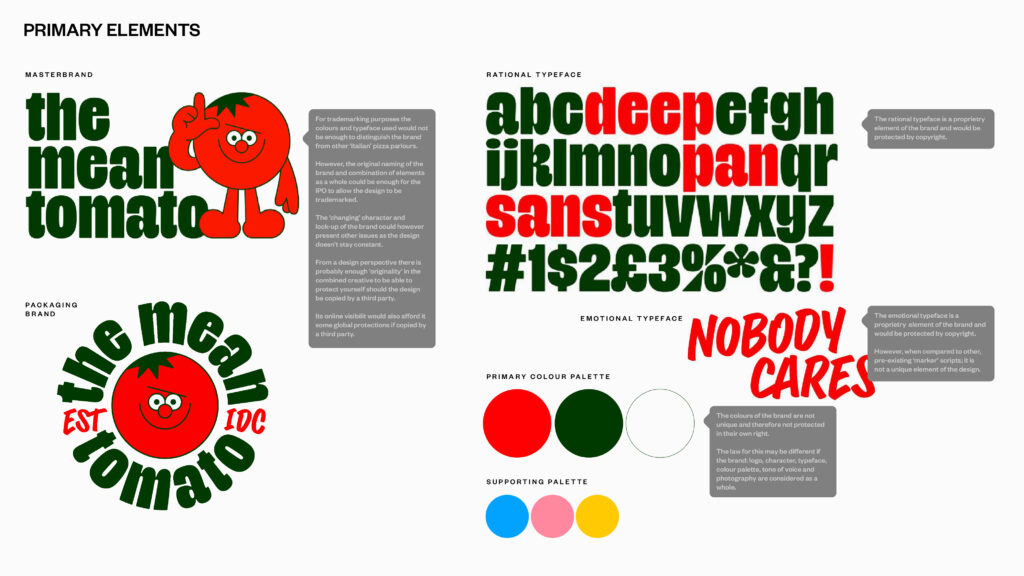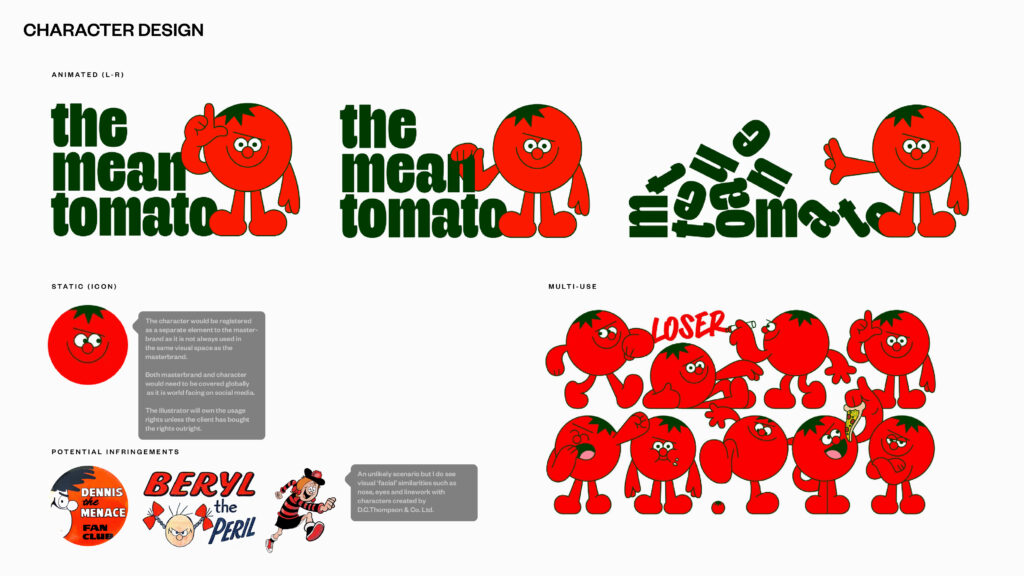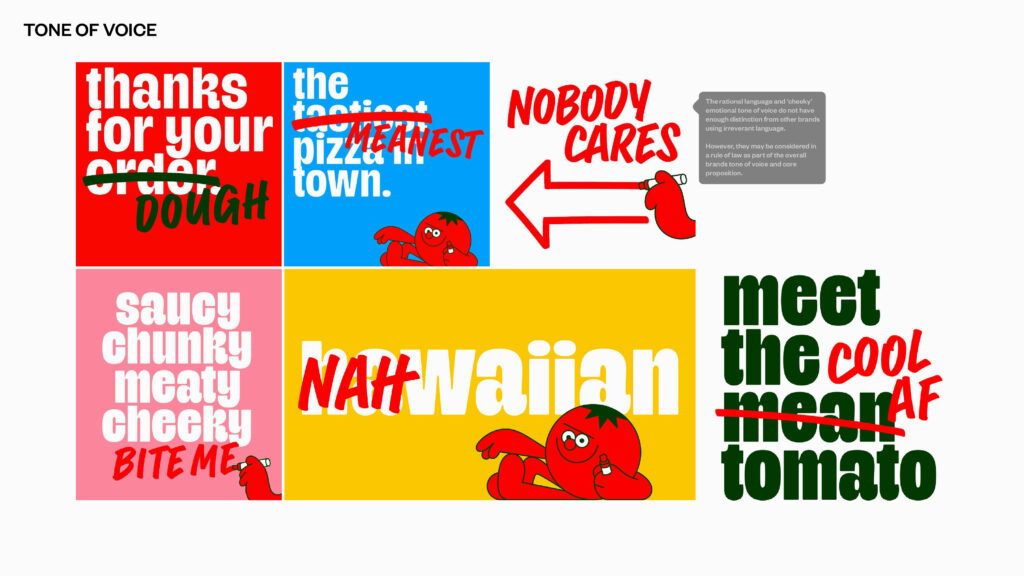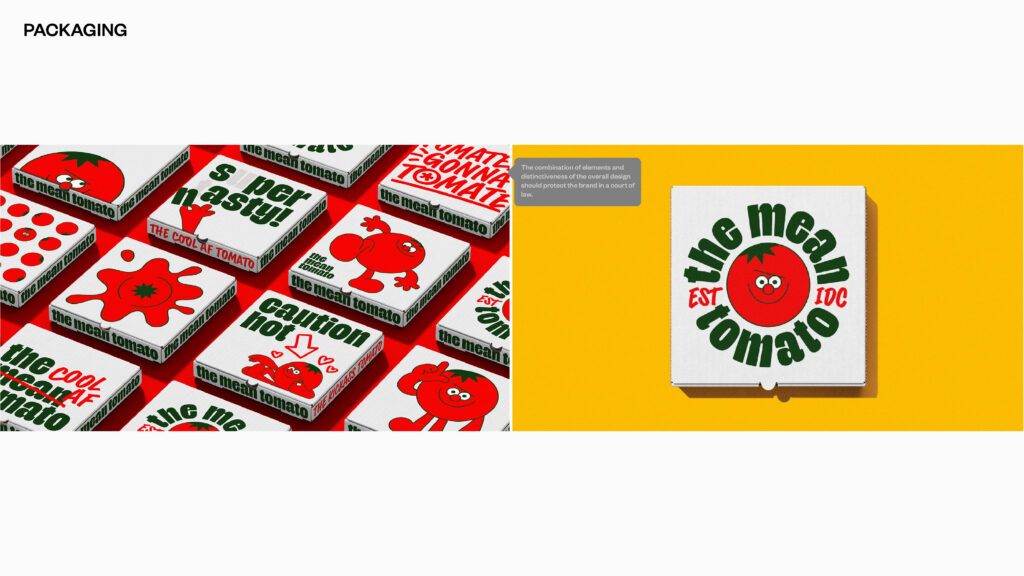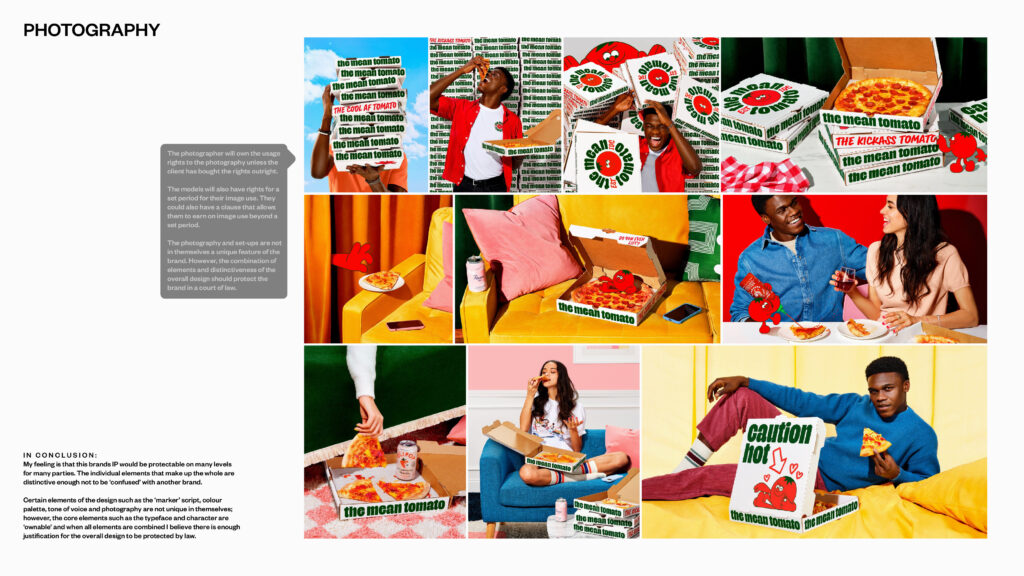Legal and IP Frameworks: Comparing Different Case Studies, Media Use and Equity Ownership.
REFLECTIONS ON LECTURE AND RESOURCE MATERIALS
Intellectual Property (IP) as summarised on Ireland's IPOI website is "the product of someone's mental efforts. An individual's creativity and innovation can be owned in much the same way that they can own physical property. National and International laws and conventions recognise the product of a person's mental efforts as an Intellectual Property right (IPR)." (1)
It is vital for designer's to understand the various way's in which their work can be protected for both their practice and their client's. IP rights cover both ownership of the designs created and its various intended applications. You can secure the IP of unique asset creation for illustrations, photography, typefaces, packaging and digital platforms, although specialist advice is recommended for online applications as the work is generally seen globally. Brandnames and slogans can also be protected.
...
Copyright
Unlike a trademark or a patent that you need to register, you’ll have the copyrights of your work immediately. This means that no one can take your presentations, scripts, videos or software and use them without your consent.
You can give people a license to use your material for free or charge a fee.(2)
You can check with your local IPO (Intellectual Property Office) to ensure you are not infringing another brands name or slogan. This is also a useful exercise to perform for your own company name.
To avoid issues occurring in the first place the designer should apply some simple common sense: Be inspired - don't plagiarise, create independent design work and ensure you document your process. Documenting the process with dates from start to finish through clear filing and email data is your best defence should a legal dispute arise. If a legal dispute does arise the legal teams (defence and prosecution) will look at the process forensically; Metadata, when and where work was created and by whom.
Definition: The copying of the whole, or a substantial part of the original work.
...
Trademarks
A trademark refers to anything that can distinguish your brand from competitors. This includes the name of your business or brand, symbols, illustrations, icons, logos, colours and taglines, all the graphic elements that make your brand unique in the market and that your customers can identify you with. Domain names can also be protected with trademark registration.(2)
You can apply for your design to be trademarked through your IP office. Trademark application and clearance protects yours and the clients creative. If a trademark is disputed the legal teams will look for visual similarities (over a time period if the brand has prior equity), conceptual similarities and aural similarities (how you write and say a brands name). A trademark is generally categorised within its appropriate design sector. Trademark infringement generally deals with what the mark has been registered for (use), where it has been used (sector) and whether it can be 'confused' with another brand.
...
Business Name Registration
Registering a Limited Company in Ireland will immediately protect your business name. The Companies Registration Office (CRO) will prevent other people from registering a business with a similar name. But you still need to trademark your trading name since this is not protected by the CRO.
If you’re a sole trader you should also trademark your business name to avoid any issues.(2)
...
Contracts
Unregistered rights to the work protect you throughout the design process but it is also of paramount importance to set out your stall on ownership, application, usage rights etc... in a contract that is approved by both parties before work commences. This will go some way to protecting you and your client and underline where everyone stands including third parties. This is especially important in defining who owns what during and at the end of the process and who can use the designs created. If a project will be recreated again and again you can also include whether the fee is a 'one off' or whether there will be 'residual' payments.
It is not uncommon for contracts that deal with IP to have an indemnity with respect to a third party IP.
Example:
Intellectual Property Infringement Indemnification. 1.1 We will defend you against any third party claim(s) that the ... infringes that third party’s patent, copyright, or trademark, or misappropriates its trade secrets, and will pay the amount of any resulting adverse final judgment (or settlement to which we consent). You must notify us promptly in writing of the claim and give us sole control over its defence or settlement. You agree to provide us with reasonable assistance, cooperation, and information in defending the claim at our expense.
Given the above example where you leave yourself open to the payment of 'final judgement' court costs, it is important to understand contract law and what you are offering in terms of responsibility.
...
Ownership
Paid or not, legally, the original creator of the logo (designer), owns the copyrights. Before a client starts working with a graphic designer they should ensure there’s a contract that states how much they're paying and that the designer will give them full ownership of the logo and any graphic materials after the invoice is paid in full. If there is no contract in place then the designer keeps full ownership of all the material. (2)
...
Disputes
Legal disputes can start simply by one party finding a similarity to one design created to another. This can also be exacerbated by public opinion, media or social media involvement.
If the action is brought against your client your best defence is your documentation process. Cases where minor similarities or 'no deception' is found are usually not considered seriously in a court of law and no further action will be taken. However, this depends on who takes the action and how much money they have behind them to pursue a case. If the case is proved, worst case scenario you could end up paying your clients legal costs with respect to infringement of a third party IP.
If you are deciding to take an action yourself you need to be clear as to what it is you want to achieve:
— Protection for your IP.
— For the third party to cease using the design (cease and desist).
— Compensation for lost revenue.
You can also gain support online and call out a design but this simple act of posting exposes you to allegations, deformation and potentially claims against you.
...
Companies should check for existing trademarks in early stages
"Companies and branding consultancies should check for existing, registered trademarks or logos before committing to the launch of a new one, to avoid drawn-out and expensive legal battles."
“Sophisticated searches are now available,” It is always wise to check with a global brand or trademark expert in the first stages, who can advise before a new logo is launched, which will safeguard against public spats.”
“The most positive next step would be to mediate rather than litigate, and for a neutral, third party to get the parties to talk, negotiate and settle. Is a long legal battle really good for either brand?”(3)
(1) Retrieved from: https://www.ipoi.gov.ie/en/understanding-ip/getting-started-with-intellectual-property/what-is-ip-.
(2) Retrieved from: https://www.gorgeousdesignco.com/secrets-designers-wont-tell-you/everything-you-need-to-know-about-intellectual-property.
(3) Retrieved from: https://www.designweek.co.uk/issues/15-21-january-2018/formula-1-face-legal-battle-new-logo.
...
Workshop Challenge
Select a designed object and highlight the key areas that may infringe copyright or require IP protection.
I chose to look at a more recent brand from the perspective of what could or couldn't be protected. As modern brand design has become multi-faceted with many flexible parts it is no longer just a case of trademarking a logo. The overall brand needs to be considered in its constituent parts and as a whole as to which elements are protectable and to whether the brand can be protected as a whole entity. All modern brands also enter the global online space, therefore regional trademarking and specialist online trademarking rules also apply.
